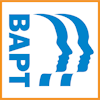(Adapted from The MBTI® Tool as a Gateway to Diversity Work, Katherine & Elizabeth Hirsh. 2003)
“What people have in common is that they are unique;
everyone is a minority of one.”
Harris Sussman, speech to United Auto Workers,
Detroit, April 20th, 1999
 What does the opening quotation signify in terms of your practice? It means that you as a practitioner need to be aware of how you, as an instance of a particular four-letter type, express that type in unique ways. You need to see yourself as comprising more than your type. This realization is crucial as it opens you up to the possibility that the way another individual expresses his/her type is also going to be unique. Thus, you are moving away from a caricatured view of type and toward a richer understanding of the expression of type preferences.
What does the opening quotation signify in terms of your practice? It means that you as a practitioner need to be aware of how you, as an instance of a particular four-letter type, express that type in unique ways. You need to see yourself as comprising more than your type. This realization is crucial as it opens you up to the possibility that the way another individual expresses his/her type is also going to be unique. Thus, you are moving away from a caricatured view of type and toward a richer understanding of the expression of type preferences.
Type, The Unabridged Version
Just as we don’t want to assume that someone who prefers ESTP would only be concerned with observable concrete data, we also don’t want to assume that all people with ESTP preferences would act or think alike all the time. Preferences should be used to begin the process of learning about the self and others. Preferences should not be used as a simplistic summation of one’s own or another’s identity. Knowing what “box” you are in can serve as a springboard for breaking free of both the box and the limiting notions inherent in the whole idea of boxes. If you know who you are and have identified your strengths and challenges, you can make a choice to stretch beyond them.
For example, if an individual with ISFP preferences knows that there is a need to be tougher, to be more extraverted, she can work to be those things. Instead of seeing the label ENTJ as constraining her to always taking charge, an individual with these preferences can strive to foster collaboration, allowing others to take the lead on occasion.
Resisting the temptation to see all members of a type as the same can be a gateway into resisting this temptation in other realms. Labels are a convenient and useful shorthand, but individuals can and do transcend such labeling.
Just as all INFJs are like all other INFJs, like some other INFJs and like no other INFJs, all white middle class people are similar in multiple ways and also dissimilar in multiple ways. Using psychological type appropriately offers a model to avoid stereotyping in general.
Showing people the folly of essentializing ENFP preferences – all ENFPs are “X” – offers a safe starting point for illustrating the illogicality and futility of essentializing other labels – all vegetarians are “Y” and so on.
Moreover, identifying type differences may be particularly useful in surfacing beliefs about other “invisible” diversities; for example, veteran status, sexual orientation, chronic illness (including mental health issues), illiteracy, abuse survivorship, refugee status, criminal background, etc. Unlike visible diversities, diversities within dominant groups are often not acknowledged, just as in the type community diversity among people with preferences for INTP may not be recognized.
Making people aware of invisible diversities helps in two ways: one, individuals from the dominant culture learn they are actually diverse; and, two, individuals may come to recognize that diversity is more than skin deep. The implication is that diversity is as much about who you are as it is about others. Pushing members of a dominant group to consider times where they were the outsider, where their diversity set them apart, can help them recognize the sting of discrimination and engage empathy for those who deal with that sting on a regular basis.
Practise What You Are
If coming to know ourselves is the first step in diversity work, then the real “meat” lies in putting that awareness into practice. If you are not self-aware, your behavior will remain something of a mystery to you and others. Without self-knowledge you are at the mercy of circumstances – you cannot lead yourself if you do not know yourself. Give yourself the freedom to be as you are. Opening ourselves to our diversities gives clients the choice to utilize or decline what we truly have to offer.
KATHERINE HIRSH (INTP), a Plenary speaker at the BAPT 2018 conference.
About the Author
 Katherine W. Hirsh, D.Phil. is a principal of HirshWorks, a writing and management consultancy. She is co-author of the Self-Discovery Digest blog and the type report Building Your Career Transition Strategy. She has been using psychological type personally and professionally for over twenty-five years. Katherine’s preferences are for INTP. Email: hirshworks@gmail.com
Katherine W. Hirsh, D.Phil. is a principal of HirshWorks, a writing and management consultancy. She is co-author of the Self-Discovery Digest blog and the type report Building Your Career Transition Strategy. She has been using psychological type personally and professionally for over twenty-five years. Katherine’s preferences are for INTP. Email: hirshworks@gmail.com

